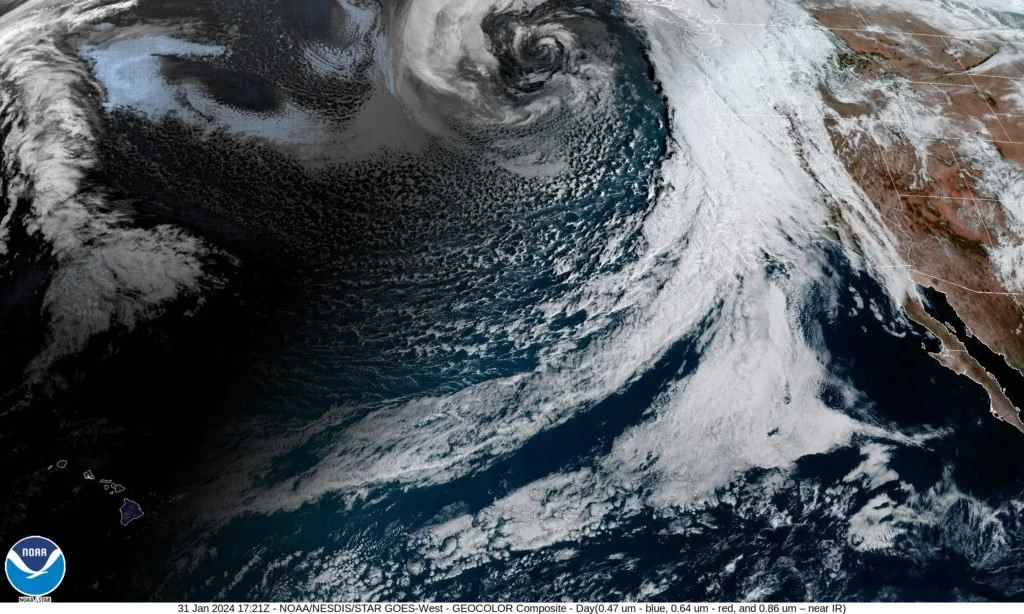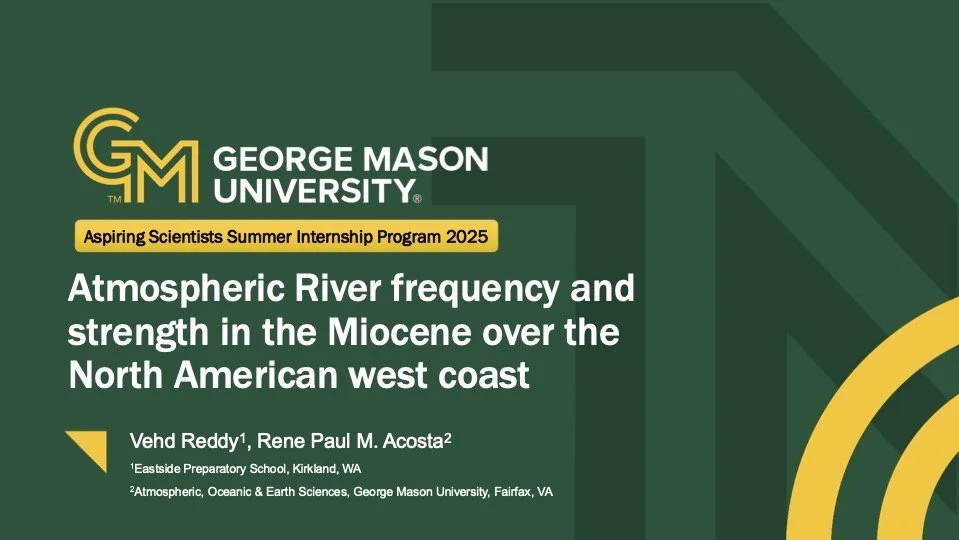
Atmospheric River frequency and strength in the Miocene over the North American west coast
2025 summer research internship, George Mason University
Abstract
Atmospheric Rivers (ARs) are long, narrow bands of concentrated moisture that deliver significant rainfall to the North American West Coast, sustaining regional water supplies but also triggering flooding and landslides. Understanding how their behavior may change in a warmer climate is critical. This study examines AR frequency and strength during the Miocene Climatic Optimum (MCO, ~15 Ma)—a period with near-modern geography but global temperatures 7–10°C warmer and CO₂ levels between 400–1000 ppm—to serve as an analog for future climate conditions. Using Community Earth System Model (CESM 1.3) simulations at 2° resolution and applying the Image-Processing Atmospheric River Tracking (IPART) algorithm, we analyzed AR activity off the western coast of North America. Results show a ~31% increase in AR frequency and a ~10.4% rise in integrated vapor transport (IVT) strength under MCO conditions (400 ppm) compared to preindustrial simulations. These findings suggest that continued global warming could lead to more frequent and intense ARs, heightening risks of extreme precipitation, flooding, and slope failure. Future work will extend the analysis to higher CO₂ scenarios (560 ppm) and finer model resolutions to improve confidence in projections of AR behavior in a warming world

